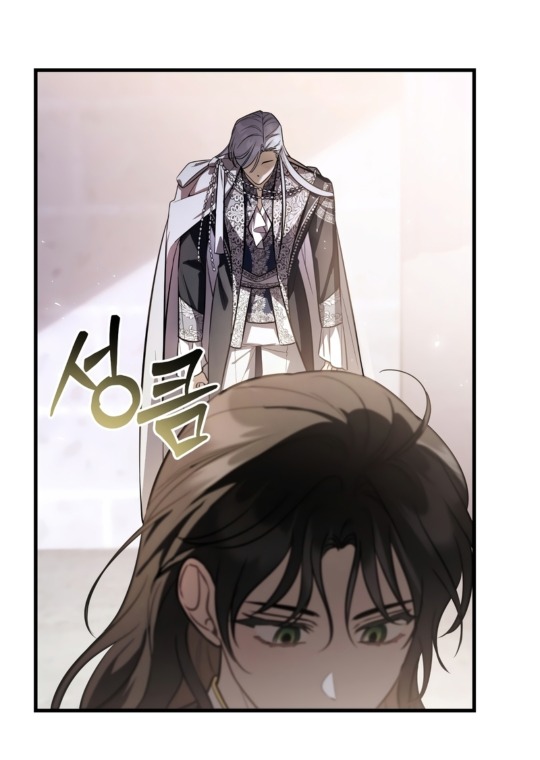#ricardi
Photo

#medici #ricardi #horsehead #florence #screenwriting #writing #tvwriting #amwriting #film #television #nycgratitude. (at Manhattan, New York) https://www.instagram.com/p/CqLLyCIsl25/?igshid=NGJjMDIxMWI=
#medici#ricardi#horsehead#florence#screenwriting#writing#tvwriting#amwriting#film#television#nycgratitude
4 notes
·
View notes
Text

11 notes
·
View notes
Text

Mariel Bonino by Jessica Ricardi
4 notes
·
View notes
Text

Vincenzo Ricardi
1 note
·
View note
Text
One Night Stand Murder (2023 Lifetime)
One Night Stand Murder (2023 Lifetime) #LifetimeMovies #Lifetime #OneNightStandMurder
One Night Stand Murder (2023 Lifetime)
📺. Stream/Watch the Movie (Ad): Subscribe to the Lifetime Movie Club
Cast: Casey Waller, Alex Trumble, Alisha Ricardi, Patrick Quinn
Director: Brittany Underwood
Writers
Adam Rockoff
Jeffrey Schenck
Peter Sullivan
➡️ Check out our Youtube Channel: Lifetime Uncorked: Lifetime Movie Reviews
🎧 Listen to the Lifetime Uncorked Podcast: Listen…

View On WordPress
#2023#Adam Rockoff#Alex Trumble#Alisha Ricardi#Brittany Underwood#Casey Waller#lifetime#Lifetime Movie#Lifetime Movie Club#Lifetime Movie Network#Lifetime Movies#LMN#One Night Stand Murder#Patrick Quinn#tv movie
0 notes
Photo

🌼 Digitalium monographia: Londini: Typis Ricardi et Arthuri Taylor: MDCCCXXI [1821].
61 notes
·
View notes
Note
What are your thoughts on long haired mls in otome isekai?
LOVE THEMMM wish there were more of them out there tbh . shoutout to ricardis from a night without shadow the only white hair ml ever
#asks#im joking im a terry enjoyer first and foremost#read a transmigrator’s privilege it’s my fav series ever
118 notes
·
View notes
Text
My favorite flavor of Ricardis is when Roselyn reduces him to nothing but a pathetic blushing wet cat




I mean I don't blame the man like me too. Roselyn goes from adorable precious little angel to absolute badass queen that can step on me in a matter of seconds. Like Ricardis is incredibly valid
21 notes
·
View notes
Text
Great women in paleontology: Diana Mussa | Grandes mulheres na paleontologia: Diana Mussa

🇬🇧 Diana Mussa, born in Campos dos Goytacazes on January 19, 1932, and passed away in Rio de Janeiro on May 8, 2007, was a renowned Brazilian geologist and paleobotanist, globally recognized for her expertise in Devonian flora. She was a trailblazer in this field in Brazil and also a respected professor at the Federal University of Rio de Janeiro.
The youngest of five siblings, Diana was the daughter of Lebanese parents. Since childhood, she harbored the dream of becoming a naturalist, driven by her deep interest in nature and natural processes. In 1952, she moved to Rio de Janeiro to study Natural History at the National Faculty of Philosophy, Sciences, and Letters of the University of Brazil (now UFRJ), where she also pursued Geology. During this time, she had the opportunity to intern under renowned researchers such as Dr. Fernando R. Milanez at the Rio de Janeiro Botanical Garden and Dr. Calvino Mainieri at the São Paulo Institute of Technological Research.
In the late 1950s, she joined the Convent of the Poor Clares to volunteer with underserved populations, and she was sent to Manaus. Between 1958 and 1961, she lived in Tefé, conducting research on fossilized woods and participating in missionary activities. After returning to Rio de Janeiro for health treatment, she joined the National Commission of Nuclear Energy and commenced her postgraduate studies in 1973 at the Institute of Geosciences of the University of São Paulo, under the guidance of Prof. Dr. Antonio Carlos Rocha-Campos. Her thesis, defended in 1982, on the Permian Lignitafofloras of the Paraná Basin, Brazil (States of São Paulo and Santa Catarina), was approved with distinction.
Diana became a researcher at the National Department of Mineral Production and later worked at the National Museum in Rio de Janeiro, where she became an Adjunct Professor of Paleobotany in 1993. Throughout her career, she described approximately 30 genera of fossilized plants, leaving behind an important legacy in the form of her collection of fossil wood slides. Additionally, she was a founding member of the Brazilian Society of Paleontology and a member of various other international and national organizations in her field. Her name inspired the naming of the genus Mussaeoxylon seclusum Merlotti 1998, for Gondwanan fossil gymnosperm wood from Brazil, and the species Glossopteris mussae Ricardi-Branco et al. 1999, for new Permian fossil leaves from São Paulo.
🇧🇷 Diana Mussa, nascida em Campos dos Goytacazes em 19 de janeiro de 1932 e falecida no Rio de Janeiro em 8 de maio de 2007, foi uma renomada geóloga e paleobotânica brasileira, reconhecida mundialmente por sua expertise na flora do devoniano. Ela foi a pioneira nesse campo no Brasil e também uma respeitada professora na Universidade Federal do Rio de Janeiro.
Filha de pais libaneses, Diana era a caçula de cinco irmãos. Desde a infância, cultivava o sonho de se tornar naturalista, devido ao seu profundo interesse na natureza e nos processos naturais. Em 1952, mudou-se para o Rio de Janeiro para estudar História Natural na Faculdade Nacional de Filosofia, Ciências e Letras da Universidade do Brasil (atual UFRJ), onde também cursou Geologia. Durante esse período, teve a oportunidade de estagiar com renomados pesquisadores, como o Dr. Fernando R. Milanez no Jardim Botânico do Rio de Janeiro e o Dr. Calvino Mainieri no Instituto de Pesquisas Tecnológicas de São Paulo.
No final dos anos 1950, ingressou no Convento das Clarissas para realizar trabalho voluntário com populações carentes, sendo enviada para Manaus. Entre 1958 e 1961, viveu em Tefé, onde conduziu pesquisas sobre madeiras fósseis, além de participar de atividades missionárias. Após retornar ao Rio de Janeiro para tratamento de saúde, ingressou na Comissão Nacional de Energia Nuclear e iniciou sua pós-graduação em 1973 no Instituto de Geociências da Universidade de São Paulo, sob a orientação do Prof. Dr. Antonio Carlos Rocha-Campos. Sua tese, defendida em 1982, sobre as Lignitafofloras Permianas da Bacia do Paraná, Brasil (Estados de São Paulo e Santa Catarina), foi aprovada com distinção.
Diana tornou-se pesquisadora do Departamento Nacional de Produção Mineral e, mais tarde, passou a trabalhar no Museu Nacional, no Rio de Janeiro, onde se tornou Professora Adjunta de Paleobotânica em 1993. Ao longo de sua carreira, descreveu aproximadamente 30 gêneros de vegetais fósseis, deixando um legado importante na forma de sua coleção de lâminas de lenhos fósseis. Além disso, foi sócia-fundadora da Sociedade Brasileira de Paleontologia e membro de diversas outras organizações internacionais e nacionais ligadas à sua área de atuação. Seu nome inspirou o batismo do gênero Mussaeoxylon seclusum Merlotti 1998, para madeira fóssil gimnospérmica do Gondwana brasileiro, e da espécie Glossopteris mussae Ricardi-Branco et al. 1999, para novas folhas fósseis do Permiano de São Paulo.
#science#paleontology#geology#universe#earth#paleobotany#biology#Diana Mussa#paleontologia brasileira#paleozóico#paleobotânica#paleozoic#paleontologia#women in science#women in paleontology
8 notes
·
View notes
Text




Another post about my feast gear. I'm just so proud of what we've got. The plates are actually from Kohl's originally but we got them from a silent auction. The bowls are from Prairie Edge in Rapid City. The napkins are linen ones, the placemats we stamped in a class at an event, the forks and spoons are from Ranger Reproductions, and the candles and cup covers are both site tokens from different events. The cups are period appropriate e-ware cups that would make sense for 600-1000 Scotland, thrown by Farolfus filius Ricardi (Northshield's current kmoas and soon to be newest Laurel). The sprang bag for the deck of cards was made by a local too (I forgot her name) and the deck of cards is all Irish mythological characters, with lots of good heraldry and knotwork and stuff. We also have some knives that really aren't period looking but those go on our belts and not in our basket.
16 notes
·
View notes
Text
Whether provoked by Wyghtlok or acting on a longer-standing resolve, the newly crowned Henry V quickly and conspicuously moved to rebury Richard, with appropriate obsequies, in Westminster Abbey. Walsingham observes that "In this year [1413] the body of Richard, former king of England, that had been buried (humatum) in Langley, was raised and transported to London, and regally entombed (regaliter tumulatum) in Westminster; and not without great expense to the present king." As Walsingham suggests, a considerable ceremonial and fiscal gap separates a simple burial (stripped even of the amenity of a funeral luncheon) and a regal entombment. The 1 Henry V issue rolls reveal the detailed attention given to the reburial, both with respect to the transport of the body and its actual interment, as well as (despite the fact that the tomb itself was bought and paid for) the considerable sums involved. The entombment itself appears to have occurred in mid-December, with expenditures spread from 1 December through 22 February. Some of the more suggestive include payment to John Wyddemer, joiner of London, to make a bier ("libitina") for carriage of Richard's body ("pro cariagio corporis Ricardi") from Langley to Westminster Abbey for reburial ("de novo sepeliendo") (1 December); to Giles Thornton, household servant, for providing 120 torches to burn about Richard's body along the way (1 December); to Thomas Barbour and John Broun, valets of the earl of Arundel, to provide candle wax for the hearse recently ordained for Richard's anniversary (and for thriftily saving the wax for the king's reuse!) (4 December); to Wyddemer for a horsbere and a coffin ("cista") for carriage of the body (20 February); and alms for the brothers of Langley and for distribution while conveying the corpse (22 February). The grand scale observed throughout may be measured in the thousand marks distributed for Richard's soul along the route of the cortege bearing his bones (11 December) — in contrast with the meager twenty shillings distributed by Henry IV during Richard's original funeral at St. Paul's. Although falling short of the ambitious funeral plans outlined in Richard's own will, Henry actually exceeded Richard's hopes for torches and distribution of alms.
The issue rolls for 1 Henry V suggest that his expenditures on Richard were comparable to those for the recently completed burial of his own father. And, in certain cases, the new king did not shrink from audaciously intermingling their funeral trappings. An item for 1 December 1413 orders that banners provided for the anniversary of Henry IV be placed upon the hearse ordered at Westminster for the anniversary of the lord Richard, late king of England, there recently entombed.
Paul Strohm, "The Trouble with Richard: The Reburial of Richard II and Lancastrian Symbolic Strategy", Speculum, Vol. 71, No. 1 (1996)
#henry v#richard ii#henry iv#the trouble with richard#lancastrian propaganda#henry v and his spiritual father#historian: paul strohm
0 notes
Text

Mariel Bonino by Jessica Ricardi
0 notes
Text
A Learning Curve
The reliance on smartphones for interactions by Gen Z leads to a learning curve with the development of necessary social skills for interacting with people in person. This can be seen with Gen Z’s difficulty in developing and understanding critical nonverbal communication skills, discussed by Gabriela Riciardi with Quartz," Younger workers also need help with nonverbal cues—the kind that help you keep eye contact, express through gestures, and read a room.”(Ricardi 2023), proving the curve with Gen Zs skills social skills in the workplace.
The comfort and control provided when communicating through their phones and technologies can become a crutch for people leading to antisocial tendencies. This leads to an avoidance of in-person interactions. This furthers the severity of gen zs weakened social skills. This avoidance and subsequent weakening of social skills can have cascading effects on mental health and well-being. Without the nuanced understanding and practice of nonverbal cues and face-to-face interactions, Gen Z may find themselves feeling more anxious and less confident in social situations. This anxiety and lack of confidence can lead to a cycle of avoidance, where the comfort of digital interactions is preferred, further limiting opportunities to develop essential interpersonal skills.

0 notes
Text
Saint-Vanne Apokalips en hervorming.
In die middel van hierdie artikel staan 'n brief geskryf deur abt Richard van Saint-Vanne iewers gedurende die eerste kwart van die elfde eeu. Die brief beskryf twee reise na die ander wêreld geneem deur twee monnike by die abdij van Saint-Vaast in Arras in 1011 en 1012. 'n Noukeurige lees van die brief toon aan dat agter wat blyk 'n standaard teks te wees, wat behoort tot die baie gewilde genre van anderwêreldreise, verberg 'n apokaliptiese boodskap van dringende waarskuwing dat die wêreld op die punt staan om sy einde te bereik. Die brief dien dus as bewysteks vir die bestaan van apokaliptiese spanning in die tydperk tussen n.C. 1000 en n.C. 1033, en dra as sodanig by tot die voortdurende debat oor die 'terrors of the year 1000'.
Afdeling brokkies
Die brief
Richard se brief begin met 'n kort inleiding, gevolg deur die agtergrond van die eerste visioen. 'n Monnik in Saint-Vaast-abdy word siek en word baie swak, totdat dit lyk of hy dood is. Die monnike begin hom voorberei vir begrafnis, maar terwyl Richard, sy abt, sy liggaam ondersoek, begin die monnik se lippe beweeg, en in 'n fluisterstem beskryf hy sy siel se ses uur lange reis in die ander wêreld. Wanneer die monnik uit sy liggaam vertrek, word die monnik se siel deur drie bose geeste daarvan beskuldig dat hulle 'n klein mes verloor het
Die verborge apokalips
Met die eerste lees lyk dit of Richard se brief goed inpas by die didaktiese genre van anderwêreldreise. Albei visioene sentreer op monnike wie se siele hul liggame verlaat weens ernstige siekte; die siele word onmiddellik geoordeel vir hul aardse sondes nadat hulle van hul liggame geskei het, en word dan gered en deur 'n engel na die verskillende streke van die ander wêreld gelei. Beide anderwêreldreisigers ontmoet die siele van mense wat hulle op aarde geken het en word bygestaan deur die gebede van die lewendes. En sodra hulle voltooi het
Apokalips en hervorming
Apokaliptiese verwagtinge het nie net die passiewe vrees behels wat so dramaties deur die 'romantiese' historici uitgebeeld is nie, maar ook 'n aktiewe afwagting. Die dringende gevoel van imminence, soos Richard Landes dit gedefinieer het, het die oproep tot vernuwing en hervorming ontketen.38 Richard van Saint-Vanne was die abt van 21 abdiye en het al die abdye onder sy beheer hervorm. In sy brief die behoefte aan hervorming in sy kloosters en sy totale verbintenis tot die kloosterlewe, soos ingeskryf in die
Gevolgtrekkings
Richard van Saint-Vanne se brief, 'n teks geskryf in die deurslaggewende jare tussen die millennium van die inkarnasie en dié van die passie, wat baie duidelik stel dat die wêreld oor 'n paar jaar gaan eindig, is 'n belangrike toevoeging tot die groeiende korpus bewyse vir die bestaan van apokaliptiese verwagtinge aan die begin van die eerste millennium. Die brief beweer nie net dat die einde van die tyd op hande is nie, maar dit dui op die bestaan van geweldige apokaliptiese spanning. Die siel word herhaal
Apokalips en hervorming
In medio huius articuli extat epistola Richardi abbatis Sancti-Vanne quondam saeculo primo quarto decimo. Litterae duas navigationes ad superos mundos a duobus monachis captas describit apud abbatiam Saint-Vaast in Atrebatensi anno 1011 et 1012. Diligens epistolae lectio manifestat post id quod videtur esse norma textus, ad valde popularem genus pertinens. superna itinera iter facit, apocalypticum nuntium abscondit urgentis admonitionis mundum ad finem suum perventurum. Littera sic argumentatur pro exsistentia tensionis apocalypticae in periodo inter A.D. M ET A.D. 1033, et sic confert ad perpetuam disputationem de terroribus anni M'.
Sectionis excerpta
Epistula
Ricardi epistolae aperit cum brevi praefatione, subsequitur curriculum ad primam visionem. Monachus in abbatia Saint-Vaast infirmatur et admodum debilis fit, donec mortuus esse videatur. Monachi eum ad sepulturam incipiunt praeparare, sed ut Ricardus, abbas eius, corpus examinat, labia monachi movere incipiunt, et susurra voce animam suam sex horarum iter apud inferos describit. Et recedens a corpore, accusatur anima monachi a tribus malis spiritibus amittendi cultellum
Apocalypsis abscondita
Lectio prima, Epistola Ricardi in didacticam genus aliorum orbis itinerum bene decere videtur. Ambo visiones in monachis versantur, quorum animae ob gravem morbum corpora sua relinquunt; animae statim iudicantur de suis terrenis peccatis, post discessum a corporibus, et tunc ab angelo salvantur et ducuntur ad varias mundi regiones. Ambo peregrini in terris animabus hominum cognitis occurrunt et viventium precibus adiuvantur. Et cum compleverint
Apocalypsis et reformatio
Exspectationes Apocalypticas implicabant non solum timorem passivum, qui tam dramatice ab historicis "romanticis", sed etiam actuosam exspectationem expressit. Urget instantiae sensus, ut definivit Richardus Landes, vocationem renovationis et reformationis urget. 38 Ricardus de Sancto Vanne 21 abbatiarum abbas fuit et omnes abbatias sub eius cura reformavit. In litteris suis de necessitate reformationis in suis monasteriis ac de toto officio vitae monasticae, prout inscribitur
conclusiones
Litterae Richardi a Saint-Vanne, textus in decretorio annis inter millennium incarnationis et passionis scriptus, qui clarissime declarat mundum paucis annis finitum esse, magni momenti est accessio corporis crescentis. evidentiae de exsistentia exspectationum apocalyticorum in tractu primi millennii. Littera non solum asserit finem temporis instet, sed indicat tremendae intentionis apocalypticae exsistentiam. Repetita est anima
Dr De Beer
0 notes
Photo

🌼 Digitalium monographia: Londini: Typis Ricardi et Arthuri Taylor: MDCCCXXI [1821].
27 notes
·
View notes








